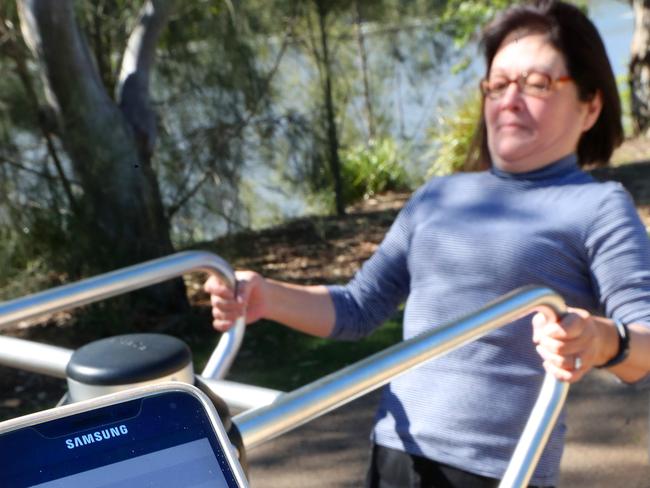UQ study aims to improve life for diabetes sufferers using smartphone app
A smartphone app and wrist-worn heart rate monitor is helping patients with type 2 diabetes get the exercise they need to cut blood sugar levels.

QLD News
Don't miss out on the headlines from QLD News. Followed categories will be added to My News.
A QUEENSLAND study will test whether patients with type 2 diabetes can slash blood sugar levels and improve overall health using a watch measuring heart rate and a smartphone app to guide their daily exercise regimen.
The research harnesses the latest technology to educate people with type 2 diabetes about how much regular exercise they need, and at what intensity, to improve blood glucose control and heart health.
University of Queensland researcher Jeff Coombes said study participants would be taught about a relatively new concept known as Personal Activity Intelligence, or PAI – pronounced “pie”.
QLD RESEARCHERS HELP FIND FIRST ANOREXIA NERVOSA GENES
QLD TEEN’S MIRACULOUS RECOVERY AFTER A BONE TRANSPLANT
TRANSPLANT PATIENT’S EXTRAORDINARY JOURNEY TO BECOME A MUM
PAI is a scientifically backed metric, designed by Norwegian researchers, based on heart rate tracking during exercise to optimise health. Queensland scientists have teamed with the Norwegian PAI developers for the diabetes study.
Professor Coombes, the director of UQ’s Centre for Research on Exercise, Physical Activity and Health, said research volunteers would aim to collect 100 PAI points a week, calculated by the PAI Connect app.

The app, which takes into account a person’s age and gender, can be downloaded for free.
“There’s evidence that if you do exercise to get your heart rate up, then that’s going to be more beneficial for your health,” Prof Coombes said.
The researchers have already recruited 20 adults with type 2 diabetes for the three-month trial, funded by the Diabetes Australia Research Trust, but need 10 more. Participants’ blood glucose and fitness levels will be tested before and after the study.
Half the study volunteers will undergo four, two-hour training sessions on using the watch and app. Their results will be compared to a control group.
Diabetes Queensland chief executive Sturt Eastwood said the smart phone app, which collected data from a wrist-worn heart-rate monitor, would take some of the guesswork out of the type of exercise, and the intensity needed, to lower blood glucose concentrations.
“This research could help doctors prescribe meaningful exercise to assist the management of type 2 diabetes in much the same way they currently write out a script for medication,” Mr Eastwood said.
Study participant Janice Lewis, 55, who retired earlier this year, said she had lost four kilos and “dramatically” reduced the amount of insulin needed to control her blood glucose levels since starting the trial.

Mrs Lewis, who was diagnosed with type 2 diabetes 15 years ago, said she walked about 4km a day – 30 minutes morning and evening – varying her pace from moderate intensity to brisk exercise to achieve the required 100 PAI a week.
“I’d never exercised, ever,” she said. “I wanted to achieve a healthier lifestyle. The whole process of using the watch and the phone app is motivating. I love it, I absolutely love it.
“If you’re committed to it, you’ll get the results. I would recommend it. I’m sure by the end of this year I’ll be 200 per cent healthier.”
To take part in the study: paifordiabetes.com or phone 0439 021 529


